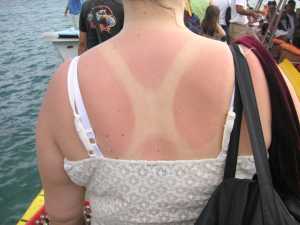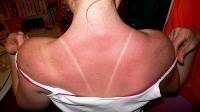
15 Oct What Can Be Done About Sundamaged Skin?
MedicalResearch.com Interview with:
Dr. Janet Prystowsky, MD
Dr. Prystowsky is a leading board-certified dermatologist in
New York City.
In addition to her private practice, Dr. Prystowsky is a senior attending physician at Mount Sinai Roosevelt/St. Luke’s Medical Center.
http://www.janetprystowskymd.com/
MedicalResearch.com: When does sun damage to the skin start? Is there such a thing as a ‘safe tan’? Who is most susceptible to photoaging? What parts of the body are more likely to show signs of sun damage?
Response: Sun damage will increase a person’s risk of premature aging and skin cancer. Although tanning does function to help protect your skin from excessive ultraviolet radiation tanning is still a form of sun damage. Also, people with very fair skin may not tan at all; only burn. They are the most susceptible to sun damage. Certain medical conditions (e.g., Lupus), medications, cosmetics, and food can make your more reactive (photosensitive) to sunlight.
 Sunburns are caused by UV damage from sun rays, almost entirely due to UVB rays. UVA rays are weaker for burning but can contribute to blistering sunburns as well. For example, If you get lime peel rubbed on your skin while you are in the sun, you could get a bad burn. UVA can also cause significant skin damage that can result in premature wrinkling, brown spots, and skin cancer. That’s why you’ll see dermatologists pushing for broad-spectrum sunscreens as opposed to sunscreens that just protect against UVB rays.
Sunburns are caused by UV damage from sun rays, almost entirely due to UVB rays. UVA rays are weaker for burning but can contribute to blistering sunburns as well. For example, If you get lime peel rubbed on your skin while you are in the sun, you could get a bad burn. UVA can also cause significant skin damage that can result in premature wrinkling, brown spots, and skin cancer. That’s why you’ll see dermatologists pushing for broad-spectrum sunscreens as opposed to sunscreens that just protect against UVB rays.
MedicalResearch.com: What can patients do for themselves or their children to limit sun damage?
Response: Clothing and shade should be used as the first line of protection. Long sleeve shirts, wide-brimmed hats, pants, and umbrellas are all good options. For exposed skin, a broad spectrum SPF 50+ mineral sunscreen is the way to go (it lists zinc oxide and/or titanium dioxide in the active ingredients). It may sound like overkill, but a lot of times sunscreens will overstate their effectiveness.
My rule of thumb is to divide the SPF number by 2 to get the real SPF number. Broad spectrum sunscreen blocks UVA and UVB rays, whereas other sunscreens only block UVB. You won’t get burnt if you use a sunscreen that only blocks UVB, but you will get sun damage that can manifest later on as age spots, wrinkles, or even skin cancer.
MedicalResearch.com: What types of treatments are available for sun induced irregular pigmentation, laxity or wrinkles and warty keratoses?
Response: Numerous laser or light source device (e.g., Erbium, Thulium, and CO2 Fractionated Laser Resurfacing, IPL, and Alexandrite laser) treatments, microdermabrasion, and chemical peels can help get rid of brown spots. Skin brightening creams with or without vitamin C and retinol can help as well. Creams with retinol can sensitize you to the sun, so it’s better to use them after Summer when you’re less likely to develop a photoreaction.
Lactic acid moisturizers, like Amlactin, and Urea based creams can help smooth out rough, cracked feet. They both work to exfoliate to reveal fresher and softer skin beneath it.
Numerous laser or light source devices (e.g., Erbium, Thulium, and CO2 Fractionated Laser Resurfacing, IPL, and Alexandrite) and radiofrequency treatments can help promote collagen growth, which will make your skin feel firmer and more elastic. Retinol and tretinoin products will also help reduce the appearance of fine lines and wrinkles. Because they are photoreactive, retinol and tretinoin should be used sparingly during the Summer but can be used more frequently in fall.
“Warty Keratoses” may be benign, malignant, or precancerous. Numerous treatments are available, but a dermatologist should evaluate the growths first to make certain they get the correct treatment.
MedicalResearch.com: Is there anything else you would like to add?
Response: The safest way to be out in the sun is in the shade, with a wide-brimmed hat, wearing SPF clothing. Always use sunscreen.
Studies have shown that people are not very good at judging their moles. If you have ever had a sunburn, it’s important to get a baseline skin cancer screen by your dermatologist by, at the latest your 20th birthday, to determine the risk factor of your mole pattern and other skin attributes including family history and tanning history (artificial or natural).
Remember, however, that while exposure to sunlight is hazardous, it is important to note that exposure to sunlight or artificial light can be beneficial for some people. Ultraviolet B stimulates vitamin D production in the skin and can also help treat immune-mediated skin diseases such as vitiligo, psoriasis, eczema, and cutaneous T cell lymphoma.
Most light-skinned adults aged 40 and over should have an annual full skin exam.
[wysija_form id=”3″]
[last-modified]
The information on MedicalResearch.com is provided for educational purposes only, and is in no way intended to diagnose, cure, or treat any medical or other condition. Always seek the advice of your physician or other qualified health and ask your doctor any questions you may have regarding a medical condition. In addition to all other limitations and disclaimers in this agreement, service provider and its third party providers disclaim any liability or loss in connection with the content provided on this website.
Last Updated on October 15, 2018 by Marie Benz MD FAAD

